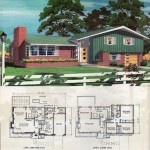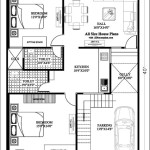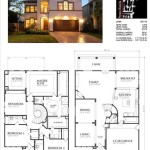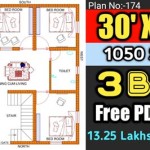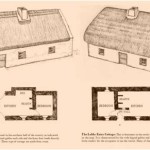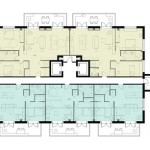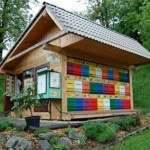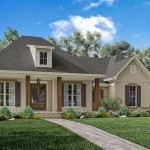English Manor Home Floor Plans: A Timeless Design
English manor homes, with their rich history and architectural grandeur, evoke a sense of timeless elegance and enduring appeal. These residences, often associated with sprawling estates and a refined lifestyle, represent a significant investment and a commitment to classic design principles. Understanding the floor plans characteristic of English manor homes is crucial for both appreciation and potential replication of this architectural style. This article will explore essential aspects of English manor home floor plans, highlighting key features and design considerations.
The design process for an English manor home floor plan often begins with a detailed analysis of the intended use of the space. These homes are typically designed to accommodate large families, frequent guests, and formal entertaining. As such, the floor plan needs to incorporate a variety of spaces, each carefully considered for its specific function. The layout must also reflect the intended lifestyle of the inhabitants, providing a balance between formal and informal living spaces.
Traditional English manor homes often feature a symmetrical facade, reflecting a sense of order and balance. However, the internal floor plan can be more complex, with wings and additions built over time. This organic growth is often reflected in the layout, with various rooms and spaces connected in a manner that echoes the historical development of the property. A meticulous understanding of these historical considerations is vital when attempting to replicate or adapt an English manor home floor plan.
Key Characteristics of English Manor Home Floor Plans
Several recurring features define English manor home floor plans and contribute to their distinctive character. These elements, rooted in historical precedent and functional requirements, are key considerations for anyone interested in recreating this architectural style.
One of the most prominent features is the grand entrance hall. This space serves as a formal introduction to the home and is often characterized by high ceilings, intricate detailing, and a sweeping staircase. The entrance hall sets the tone for the rest of the house, conveying a sense of grandeur and sophistication. It typically leads to the principal reception rooms, such as the drawing room and the dining room.
Formal living spaces are another defining characteristic. The drawing room, often the most elaborately decorated room in the house, is designed for formal entertaining and relaxation. The dining room, typically located adjacent to the kitchen, is designed for formal meals and gatherings. These spaces often feature large windows, fireplaces, and high-quality finishes.
The kitchen is typically located in a separate wing of the house, reflecting the historical division between the family living areas and the service areas. While modern English manor homes often incorporate modern kitchen appliances and layouts, the traditional kitchen was designed for functionality and efficiency, with ample storage space and separate areas for food preparation and cooking.
Essential Rooms and Their Placement
The arrangement and placement of various rooms within an English manor home are crucial to its functionality and overall aesthetic appeal. This placement is not arbitrary but reflects the hierarchical structure and social norms of the time in which these homes were originally built. Understanding the rationale behind room placement is key to creating a floor plan that is both historically accurate and functionally appropriate.
Bedrooms are typically located on the upper floors of the house, offering privacy and quiet for the occupants. The master suite is often the most spacious and luxurious bedroom, featuring a private bathroom, dressing room, and sometimes a sitting area. Guest bedrooms are typically located in a separate wing of the house, providing a degree of separation from the family living areas.
Service areas, such as the laundry room, pantry, and storage areas, are typically located in the basement or in a separate wing of the house. These areas are designed for functionality and efficiency, providing ample space for household tasks and storage. Garages, if present, are often detached from the main house, reflecting the historical emphasis on aesthetics and privacy.
Libraries and studies are common features in English manor homes, reflecting the importance of intellectual pursuits and scholarship. These rooms typically feature built-in bookshelves, comfortable seating, and ample natural light. They are often located in a quiet area of the house, providing a peaceful environment for reading and contemplation. Additionally, many manor homes include a billiards room or a games room, providing space for recreation and entertainment.
Design Considerations for Modern Adaptations
While adhering to the traditional elements of English manor home floor plans is important, modern adaptations often require adjustments to accommodate contemporary lifestyles and technological advancements. Balancing historical accuracy with the needs of modern living is a key challenge in designing or renovating an English manor home.
Modern kitchens often incorporate open-plan layouts, integrating the kitchen with the dining area or family room. This design approach reflects the contemporary emphasis on informal living and social interaction. However, it is important to maintain a sense of separation between the kitchen and the formal living spaces, preserving the traditional character of the house.
Modern bathrooms often feature luxurious amenities, such as soaking tubs, walk-in showers, and heated floors. These features can be seamlessly integrated into an English manor home bathroom, provided that they are consistent with the overall aesthetic of the house. Classic fixtures and finishes, such as pedestal sinks, clawfoot tubs, and marble tiles, can enhance the traditional character of the bathroom.
Technological advancements, such as smart home systems and energy-efficient appliances, can also be integrated into an English manor home, provided that they are discreet and unobtrusive. Hidden wiring and concealed speakers can minimize the visual impact of technology, preserving the traditional aesthetic of the house. Energy-efficient windows and insulation can improve the energy performance of the house without compromising its architectural integrity.
Consideration must be given to accessibility in modern adaptations. While traditional manor homes may have numerous stairs and limited accessibility features, modern adaptations should strive to incorporate features that make the home accessible to people of all ages and abilities. This can include the installation of elevators or chairlifts, as well as the creation of wider doorways and hallways.
Ultimately, the successful design of an English manor home floor plan involves a careful balance between historical accuracy and modern functionality. By understanding the key characteristics of traditional floor plans and by thoughtfully adapting them to meet the needs of contemporary living, it is possible to create a home that is both beautiful and practical.

English Mansion House Plans From The 1800s Floor Country Plan

Floor Plans English Manor Vanbrouck Associates Luxury Residential Design

English Mansion House Plans From The 1800s Manor Houses Floor

Floor Plans English Manor Vanbrouck Associates Luxury Residential Design

Image Result For Old English Manor Layout Country House Plans Floor Plan Houses

Bi S Hatfield Manor House Plans Country Floor Plan

Eastbury Manor House Country Floor Plan Plans

English Country Manor 15878ge Architectural Designs House Plans

Home Plan Hamilton Sater Design Collection

English House Historic Plans Classical Home

